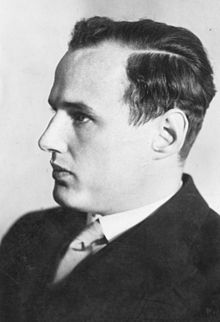
Back مانفريد فون آردن Arabic مانفريد فون آردن ARZ مانفرد فون آردن AZB মানফ্রেড ফন আর্ডেন Bengali/Bangla Manfred von Ardenne Czech Manfred von Ardenne German Manfred von Ardenne Spanish مانفرد فون آردن Persian Manfred von Ardenne French मानफ्रेड फॉन आर्डेन Hindi
Manfred von Ardenne | |
|---|---|
 Ardenne c. 1930 | |
| Born | 20 January 1907 |
| Died | 26 May 1997 (aged 90) |
| Known for | Soviet program of nuclear weapons Scanning electron microscope Scanning transmission electron microscopy Isotope separation Cathode-ray tube Duoplasmatron |
| Awards | Lenin Medal (1970) National Prize (1965, 1958) Stalin Prize (1953, 1947) |
| Scientific career | |
| Fields | Applied Physics |
| Institutions | Technical University Dresden |
Manfred baron von Ardenne (German pronunciation: [ˈmanfʁeːt fɔn aʁˈdɛn]; 20 January 1907 – 26 May 1997) was a German researcher, autodidact in applied physics, and an inventor. He took out approximately 600 patents in fields including electron microscopy, medical technology, nuclear technology, plasma physics, and radio and television technology. From 1928 to 1945, he directed his self-funded and private research laboratory Forschungslaboratorium für Elektronenphysik, where he developed and invented many techniques used in modern physics.
After the World War II, von Ardenne was held in Soviet custody and was one of many of the German nuclear physicists in the former Soviet program of nuclear weapons, and later honored with the Stalin Prize by the former Soviet Union.
Upon his return to the then East Germany, he started another private engineering firm, Forschungsinstitut Manfred von Ardenne. Ardenne is seen as one of the main inventors of the television.[1][2]